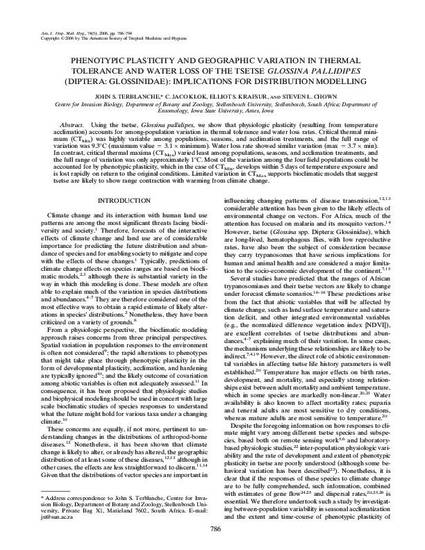
Using the tsetse, Glossina pallidipes, we show that physiologic plasticity (resulting from temperature acclimation) accounts for among-population variation in thermal tolerance and water loss rates. Critical thermal minimum (CT(Min)) was highly variable among populations, seasons, and acclimation treatments, and the full range of variation was 9.3 degrees C (maximum value = 3.1 x minimum). Water loss rate showed similar variation (max = 3.7 x min). In contrast, critical thermal maxima (CT(Max)) varied least among populations, seasons, and acclimation treatments, and the full range of variation was only approximately 1 degree C. Most of the variation among the four field populations could be accounted for by phenotypic plasticity, which in the case of CT(Min), develops within 5 days of temperature exposure and is lost rapidly on return to the original conditions. Limited variation in CT(Max) supports bioclimatic models that suggest tsetse are likely to show range contraction with warming from climate change.
Available at: http://works.bepress.com/elliot-krafsur/26/

This is an article from American Journal of Tropical Medicine and Hygiene 74 (2006): 786. Posted with permission.